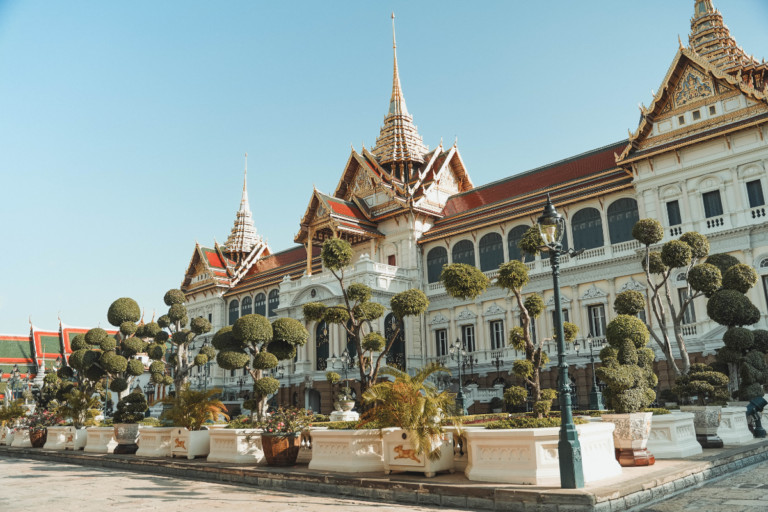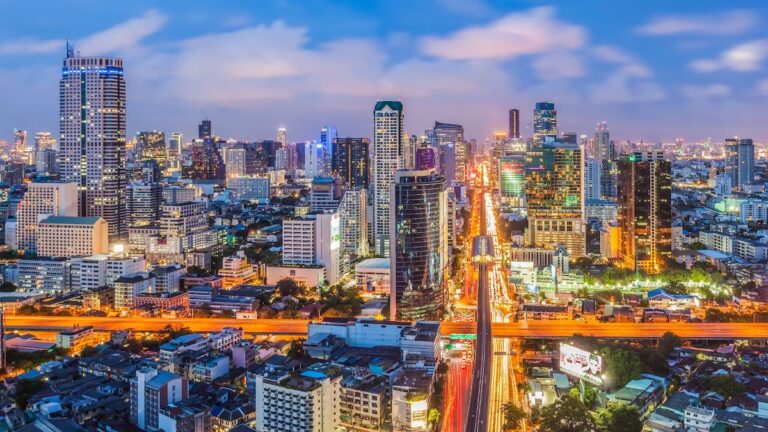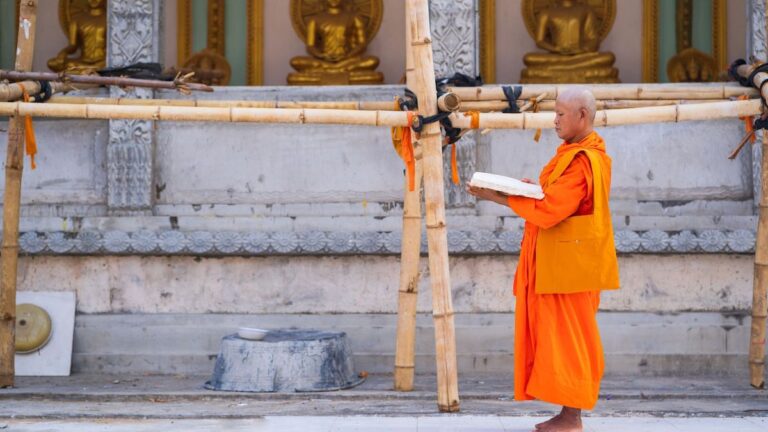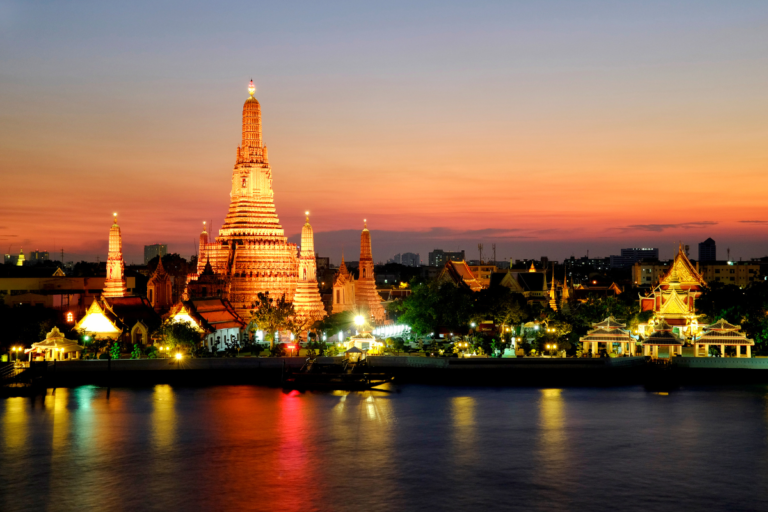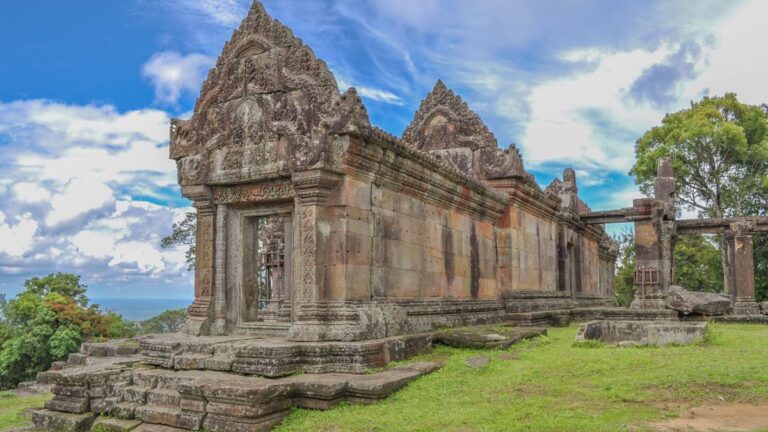Ayutthaya Temples and Attractions
Ayutthaya, the former capital of Siam before being conquered and sacked by the Burmese, has a wealth of temple architecture, though most of it is now in ruins. However, these crumbling relics still offer an impressive historic collection that has earned the site UNESCO World Heritage status. The central island is where most attractions and ruins reside and are easily seen on foot or by bicycle. It may be a good idea to hire a tour guide if you are really interested in the history of the place, but simply wandering through the charming area is rewarding enough for most people. And there are some equally impressive sites on the outer banks of the river (like Ayutthaya temples) that shouldn’t be missed.
Arriving from the capital? Check out how to get from Bangkok to Ayutthaya.
The Old Royal Palace
Not much of this remains other than the foundations, but its previous magnificence can be seen by the scale model in the Ayutthaya Historical Study Centre. Located north of Wat Si Sanphet overlooking the Lopburi River, the Ancient Palace was another unfortunate victim of the Burmese onslaught. It’s possible, however, to discern the grandeur of the original palace through the sheer size of the compound. Parts of it have been rebuilt authentically in the Ancient City Historic Park south of Bangkok.
Entry Fee: 30 baht
Open: daily, 08:30 – 15:30
Wat Phra Si Sanphet and Wat Mongkonbophit
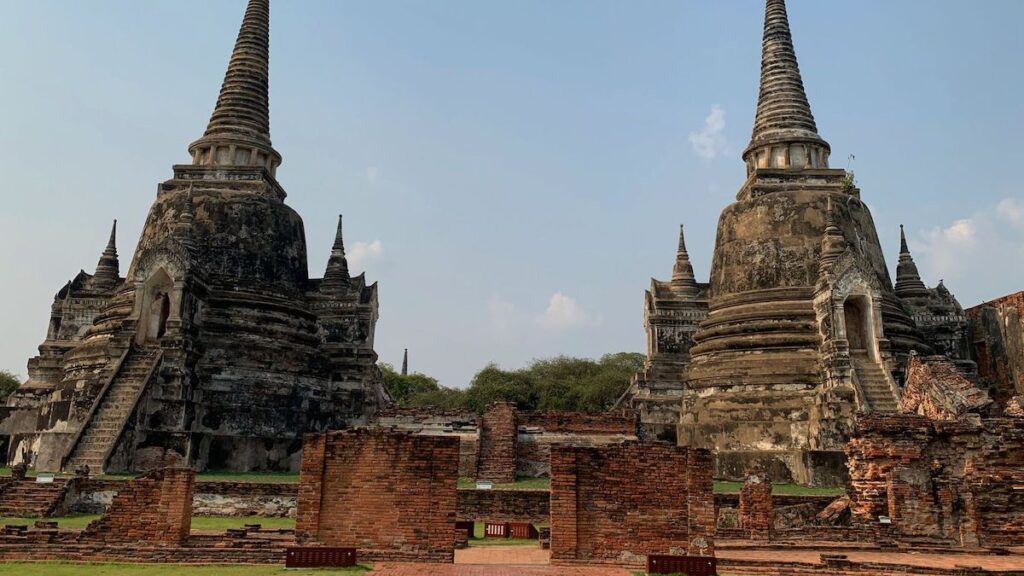 Wat Phra Si Sanphet, on the road of the same name, is the largest temple in Ayutthaya and is located on the grounds of the former royal palace. The temple’s most redeeming feature is long gone; a huge Buddha (16 m tall) was adorned with over 300 kg of gold. Of course, the Burmese made off with this after melting down the statue. Built in various stages over the 15th century as a royal chapel and burial site, the temple is today noted for its trademark trio of large chedis. Beside it is the rebuilt Mandapa of Wat Mongkonbophit, which covers a giant seated Buddha. This was built at the turn of the 17th century as a cremation site.
Wat Phra Si Sanphet, on the road of the same name, is the largest temple in Ayutthaya and is located on the grounds of the former royal palace. The temple’s most redeeming feature is long gone; a huge Buddha (16 m tall) was adorned with over 300 kg of gold. Of course, the Burmese made off with this after melting down the statue. Built in various stages over the 15th century as a royal chapel and burial site, the temple is today noted for its trademark trio of large chedis. Beside it is the rebuilt Mandapa of Wat Mongkonbophit, which covers a giant seated Buddha. This was built at the turn of the 17th century as a cremation site.
Entry Fee: 50 baht
Open: 09:00 – 21:00 daily
Wat Phra Ram
 Easily seen from the vicinity of Wat Si Sanphet, this temple complex is most notable for its central Khmer-styled prang and is one of the oldest sites in Ayutthaya, dating from 1369, though records of renovation and who actually ‘built’ it are contradictory. It served as a burial site and is surrounded by pretty lakes, making it an excellent photographic subject.
Easily seen from the vicinity of Wat Si Sanphet, this temple complex is most notable for its central Khmer-styled prang and is one of the oldest sites in Ayutthaya, dating from 1369, though records of renovation and who actually ‘built’ it are contradictory. It served as a burial site and is surrounded by pretty lakes, making it an excellent photographic subject.
Entry Fee: 50 baht
Open: 08:00 – 16:30 daily
Wat Ratchaburana
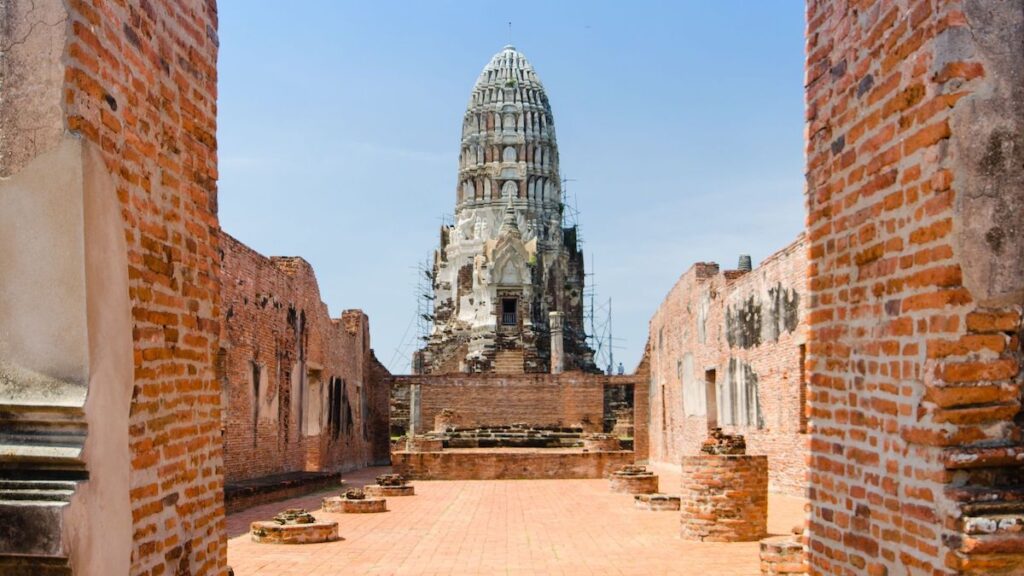 Just next door is Wat Ratachaburana, another of Ayutthaya temples. This one was built about 40 years after Wat Mahathat, in 1424, and has been well restored with its two huge monuments retaining part of their original stucco. You can climb down into the crypts – a slightly unnerving experience, particularly when no–one else is around – and take a look at some artifacts.
Just next door is Wat Ratachaburana, another of Ayutthaya temples. This one was built about 40 years after Wat Mahathat, in 1424, and has been well restored with its two huge monuments retaining part of their original stucco. You can climb down into the crypts – a slightly unnerving experience, particularly when no–one else is around – and take a look at some artifacts.
Two unusual stories are associated with the temple. The first is the legend of two princes who fought each other to the death over the right to succeed their father, leaving a third brother to unwittingly become king and build the temple in honor of all three.
And in 1957, looters broke into a hitherto unknown part of the crypt and stole a large number of valuable amulets. They were apprehended and the amulets were auctioned off to raise renovation money. Most of the artifacts can be found displayed at the Chao Sam Phraya Museum, including bronze Buddhas and jewelry.
Entry Fee: 50 baht
Open: daily, 08:00 to 17:00
Wat Phra Mahathat
 Wat Mahathat is the most impressive of Ayutthaya temples with its many headless Buddhas and striking stupa. Look out for the distinctive inverse-shaped tiers of the main prang. It served as a monastery and dates from 1374, although it has seen several renovations.
Wat Mahathat is the most impressive of Ayutthaya temples with its many headless Buddhas and striking stupa. Look out for the distinctive inverse-shaped tiers of the main prang. It served as a monastery and dates from 1374, although it has seen several renovations.
Perhaps the most eagerly visited site on the grounds of the temple is the Buddha head at the base of a large tree trunk, which was originally part of a statue before the Burmese disassembled it. It is thought that a looter left the head where it stands today and a bodhi tree (ficus religiosa) grew around, strangling it with vine–like roots.
It makes a great photo, though a Buddha’s head is eternally venerated and shouldn’t be on the ground, so do be respectful when visiting the site and especially when people are praying.
Entry Fee: 50 baht
Open: daily, 08:00 to 17:00
Chao Sam Phraya National Museum
Located on Rojana Road not far from the city center, Chao Sam Phraya National Museum is the country’s second-largest museum and features striking antique bronze Buddha images, other religious objects, intricately carved panels, and many other impressive items from the age.
Entry Fee: 150 baht
Open: 09:00 to 16:00 (closed on Monday)
Wat Chaiwatthanaram
 Perhaps the most spectacular of all the Ayutthaya temples, but often overlooked since it stands on the northwest banks of the river, this site is best reached on a river cruise around Ayutthaya. It’s relatively young by comparison (1630) but still displays the distinctive Khmer style with its main 35m prang and four lesser prangs laid out in a courtyard style, giving it a similarity to parts of Angkor.
Perhaps the most spectacular of all the Ayutthaya temples, but often overlooked since it stands on the northwest banks of the river, this site is best reached on a river cruise around Ayutthaya. It’s relatively young by comparison (1630) but still displays the distinctive Khmer style with its main 35m prang and four lesser prangs laid out in a courtyard style, giving it a similarity to parts of Angkor.
It was a royal monastery and was used as an army barracks by the invading Burmese in 1767 before falling into abandonment until its renovation in 1992. Its large grounds are worth exploring and it is easily the most photogenic of the Ayutthaya temples.
Entry Fee: 50 baht
Open: daily, 08:30 to 18:30
Chantharakasem Palace
Tied to the National Museum, this beautiful palace was home to King Naresuan whenever he stayed in Ayutthaya. The building was destroyed but later rebuilt by King Mongkut and features some amazing jewelry, plentiful Buddha images, and numerous other delightful religious objects. The palace can be found in the northeast part of the old city.
Entry Fee: 100 baht
Open: 09:00 to 16:00 (closed Monday and Tuesday)
Wat Yai Chai Mongkol
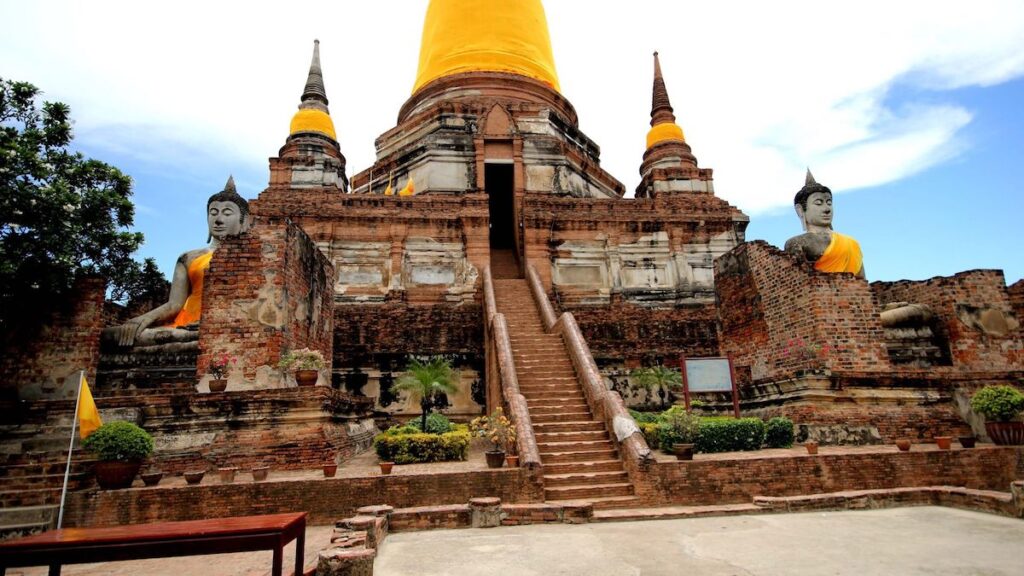 Tricky to get to, this temple is nonetheless a favorite on Ayutthaya tours with its large, well-preserved chedi that is one of the few that is not of Khmer style. You can climb halfway up for a better view of the grounds and witness Thais making merit at the reclining Buddha. Also at the site is a memorial to King Naresuan the Great and King Chulalongkorn, Rama V, who actually never lived in Ayutthaya.
Tricky to get to, this temple is nonetheless a favorite on Ayutthaya tours with its large, well-preserved chedi that is one of the few that is not of Khmer style. You can climb halfway up for a better view of the grounds and witness Thais making merit at the reclining Buddha. Also at the site is a memorial to King Naresuan the Great and King Chulalongkorn, Rama V, who actually never lived in Ayutthaya.
Entry Fee: 20 baht
Open: daily 09:00 to 17:00
Ayutthaya Historical Study Center
Also on Rojana road and near the Chao Sam Phraya National Museum, Ayutthaya Historical Study Centre is a great resource for students. It presents a good overview of Ayutthaya with some excellent models of the port area and ships, plus plenty of other impressive historical objects. This air-conditioned facility is small but offers an excellent opportunity to get your bearings on Ayutthaya before visiting all the sites.
Entry Fee: 100 baht
Open: daily 09:00 to 16:30 (closed Monday and Tuesday)
Queen Suriyothai Monument
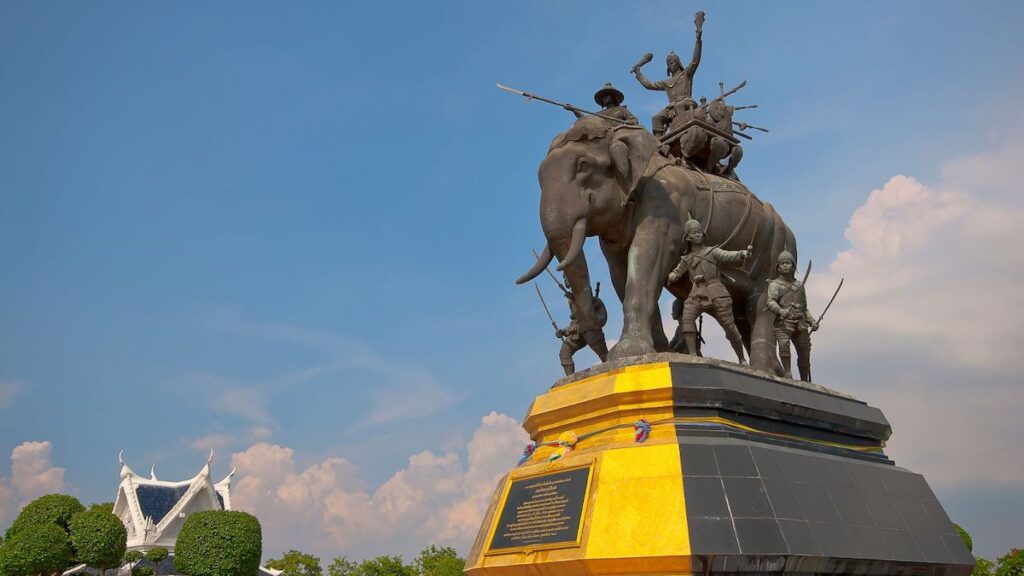 Although striking a definite image when you take the much-recommended boat tour around Ayutthaya, this lofty gilded white chedi isn’t built in the common Khmer style of the older Ayutthaya era. It commemorates a heroine who went into battle to distract an attack on her husband whose elephant had stumbled. She saved him but lost her own life. It was constructed by King Maha Chakkraphat as a memorial for her. This became the subject of a major film in 2001.
Although striking a definite image when you take the much-recommended boat tour around Ayutthaya, this lofty gilded white chedi isn’t built in the common Khmer style of the older Ayutthaya era. It commemorates a heroine who went into battle to distract an attack on her husband whose elephant had stumbled. She saved him but lost her own life. It was constructed by King Maha Chakkraphat as a memorial for her. This became the subject of a major film in 2001.
Entry Fee: free
Open: always
Khun Phaen Residence
Also on Sri Sanphet road, this beautifully–renovated traditional teak house is on most tourists’ itineraries. It is set in a park, not far from the center of the old city, and is usually populated by several elephants at any one time on their usual trot around the city.
Entry Fee: free
Open: 08:30 – 16:30
Wat Phanan Choeng
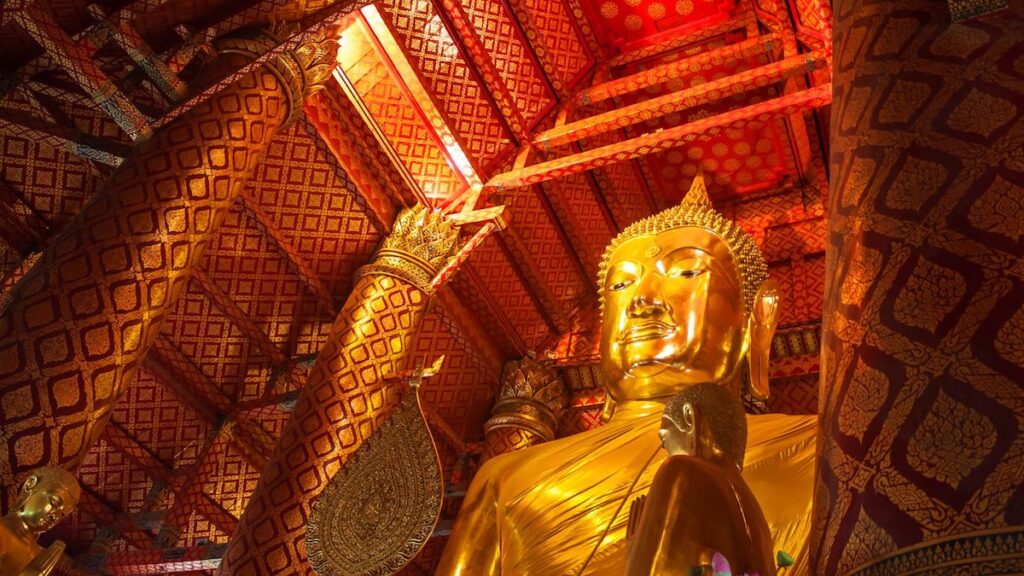 Probably not on your itinerary if you are all ‘templed out’, this is in fact one of the area’s oldest sites and dates from 1324 before the city was founded. However, most of what you see today is Rattanakosin-styled temple buildings from its renovation and rebuilding in 1854. It’s popular as a pilgrimage site for Thais due to its enormous Buddha, which cannot be seen any other way since it’s too large in its enclosure to be photographed. It’s suffered quite a few traumas over the years with various attempts over the centuries to renovate it, then in March 1928 the cheeks and lower jaw fell off and had to be rebuilt. The 165 grams of the gold leaf pasted on it over the years was collected and used for a new head ornament. Visitors may note its distinctive Chinese character to it.
Probably not on your itinerary if you are all ‘templed out’, this is in fact one of the area’s oldest sites and dates from 1324 before the city was founded. However, most of what you see today is Rattanakosin-styled temple buildings from its renovation and rebuilding in 1854. It’s popular as a pilgrimage site for Thais due to its enormous Buddha, which cannot be seen any other way since it’s too large in its enclosure to be photographed. It’s suffered quite a few traumas over the years with various attempts over the centuries to renovate it, then in March 1928 the cheeks and lower jaw fell off and had to be rebuilt. The 165 grams of the gold leaf pasted on it over the years was collected and used for a new head ornament. Visitors may note its distinctive Chinese character to it.
Entry Fee: 20 baht
Open: daily 07:00 – 18:00
St Joseph’s Church
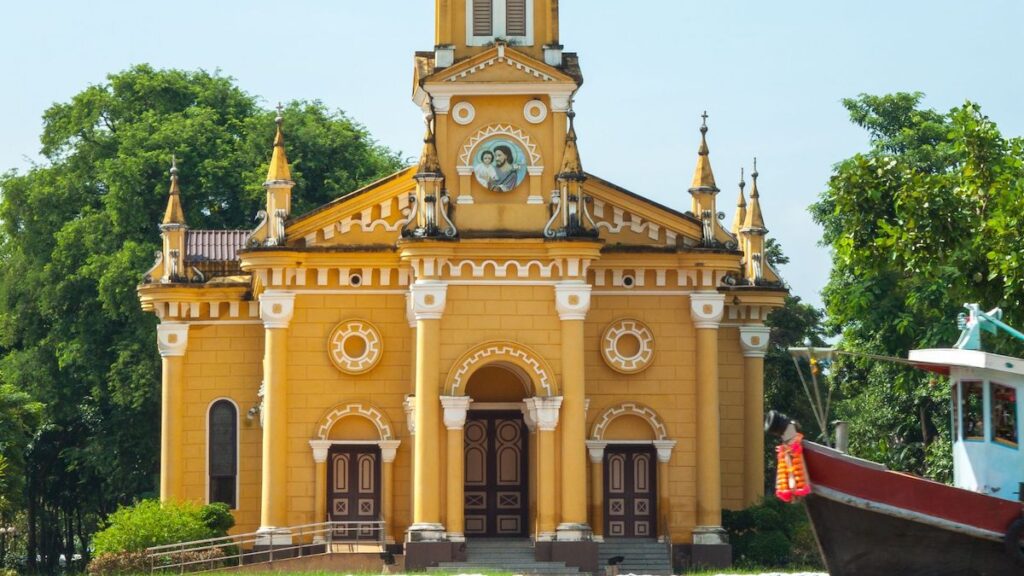 A rather out-of-place structure in this ancient Asian capital, the church is the result of Portuguese missionaries who were among the first of a growing foreign community in Ayutthaya in the 16th century before all were expelled for 100 years. A school, hospital, and missionary existed on the site since 1669, but the present structure, which is reminiscent of colonial churches in Latin America, was rebuilt long after being destroyed after the Burmese invasion.
A rather out-of-place structure in this ancient Asian capital, the church is the result of Portuguese missionaries who were among the first of a growing foreign community in Ayutthaya in the 16th century before all were expelled for 100 years. A school, hospital, and missionary existed on the site since 1669, but the present structure, which is reminiscent of colonial churches in Latin America, was rebuilt long after being destroyed after the Burmese invasion.
With its timeless, Portuguese-style design and the magnificent view of the river that it offers, this church is an ideal spot for anyone looking for a peaceful spot where you can reconnect with your spiritual side. Furthermore, if you are lucky enough, you will get to meet a flock of goats and sheep at the freshly mowed grass field by the river. And to top it all off- admission is completely free; so everyone can visit and appreciate this priceless beauty.
Entry Fee: free
Open: always
Pom Phet Fortress
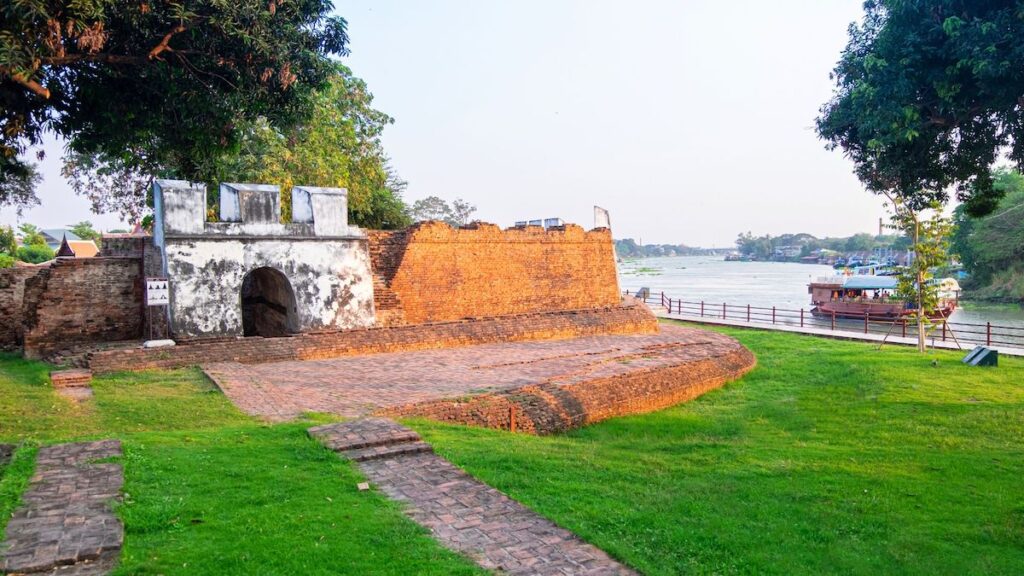 A small bastion located on the south side of the island facing the river’s departing course, this site is about the only remaining fortification of the city and isn’t much to see. However, from this point, you can take a ferry ride across to Wat Phanan Choeng.
A small bastion located on the south side of the island facing the river’s departing course, this site is about the only remaining fortification of the city and isn’t much to see. However, from this point, you can take a ferry ride across to Wat Phanan Choeng.
Entry Fee: free
Open: daily, 07:00 – 18:00
Bang Pa–In Palace
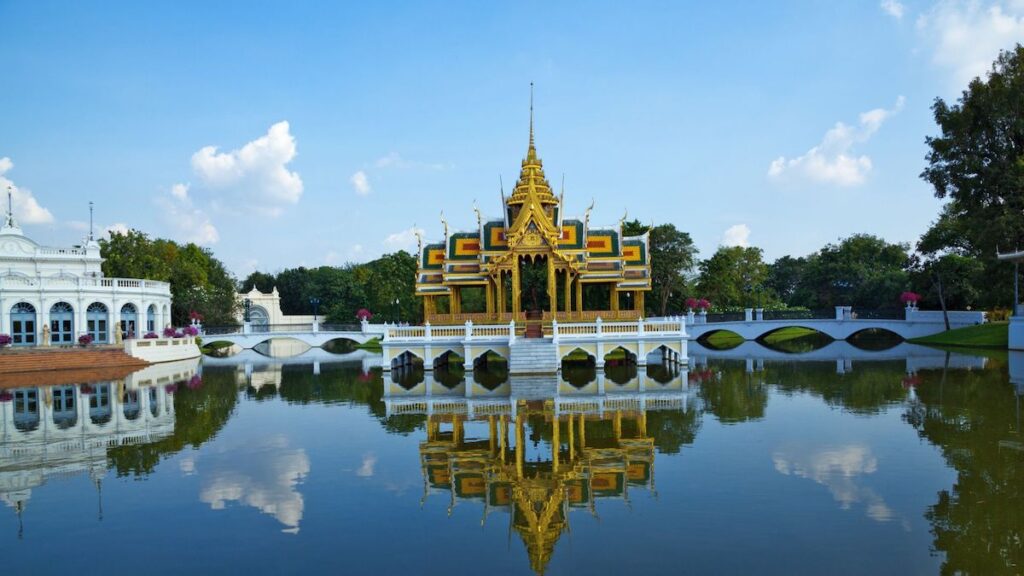 This is not strictly part of Ayutthaya, with far less historic value and built long after the city’s sacking, but it’s included on all tours of the area. Built as a summer retreat by King Rama V, who had a soft–spot for anything European, it is an eclectic mix of 19th-century Continental palace buildings and pavilions set amidst pretty ponds. The atmosphere is serene and the palace is good for photos.
This is not strictly part of Ayutthaya, with far less historic value and built long after the city’s sacking, but it’s included on all tours of the area. Built as a summer retreat by King Rama V, who had a soft–spot for anything European, it is an eclectic mix of 19th-century Continental palace buildings and pavilions set amidst pretty ponds. The atmosphere is serene and the palace is good for photos.
The Chao Praya River slides by quietly, a reminder of the tale concerning one of the King’s consorts who drowned here after falling out of a boat. She could not swim and bystanders were too afraid as commoners to touch a royal, so no one was willing to help her.
Entry Fee: 100 baht
Open: daily 08:00 – 16:00

